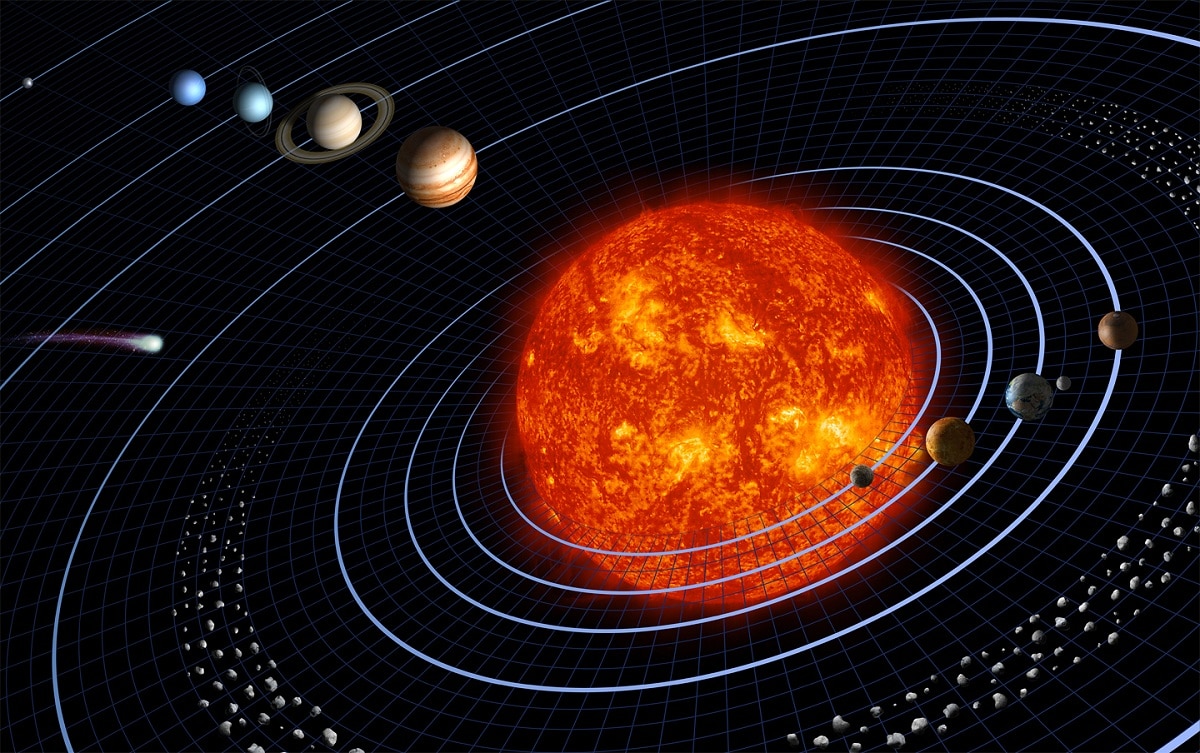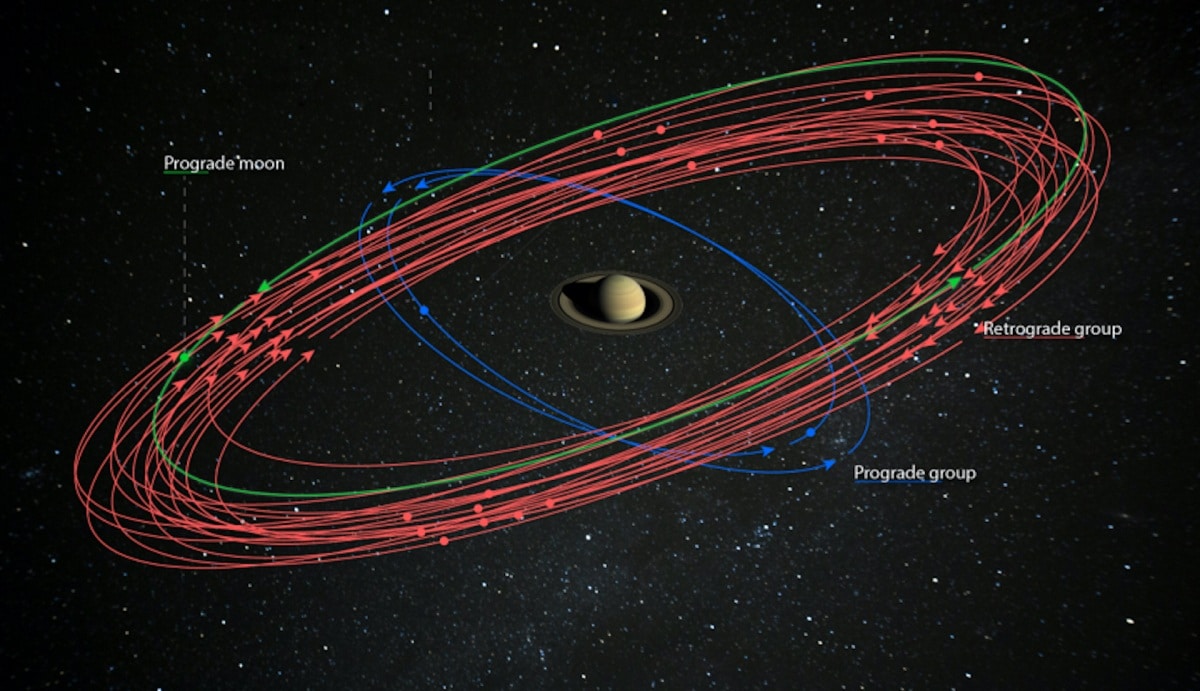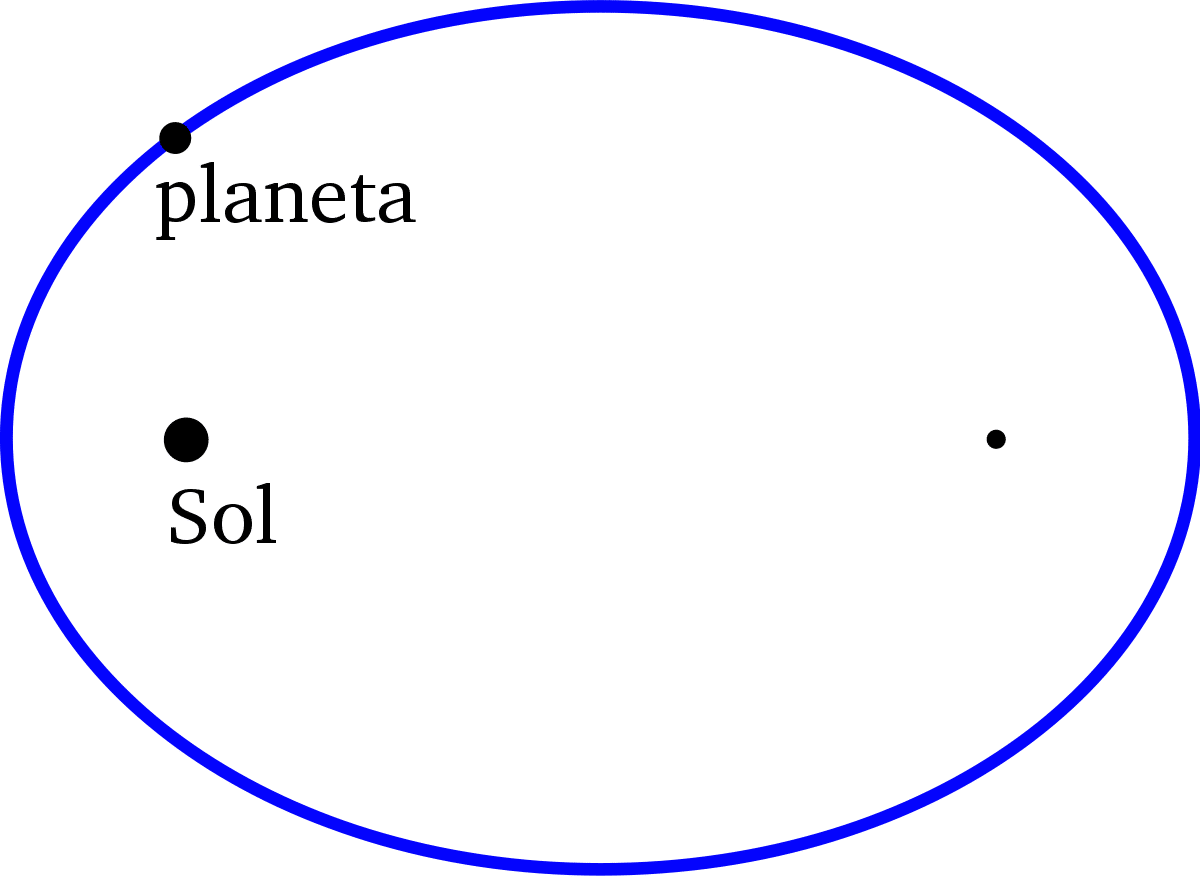
When we talk about astronomy, the solar system and the planets, we always talk about the orbit. However, not everyone knows what is an orbit, how important is it and what are its characteristics. It can be said in a simplified way that an orbit is the trajectory of a celestial body in the universe.
In this article we are going to tell you what an orbit is, what its characteristics and importance are.
what is an orbit

In physics, an orbit is the path described by one object around another, and rotates around that path under the action of a central force, as the gravitational force of a celestial body. This is the path that an object follows as it moves around the center of gravity to which it is attracted, initially without affecting it, but not completely away from it either.
Since the XNUMXth century (when Johannes Kepler and Isaac Newton formulated the fundamental laws of physics that govern them), orbits have been an important concept in understanding the motion of the universe, especially with regard to celestial and subatomic chemistry.
Orbits can have various shapes, elliptical, circular or elongated, and can be parabolic (shaped like a parabola) or hyperbolic (shaped like a hyperbola). Regardless, each orbit contains the following six Kepler elements:
- The inclination of the orbital plane, indicated by the symbol i.
- The longitude of the ascending node, expressed in the symbol Ω.
- The eccentricity or degree of deviation from the circumference, denoted by the symbol e.
- The semimajor axis, or one-half of the longest diameter, is indicated by the symbol a.
- The perihelion or perihelion parameter, the angle from the ascending node to perihelion, denoted by the symbol ω.
- The mean anomaly of the epoch, or fraction of the elapsed orbital time, and expressed as an angle, denoted by the symbol M0.
Characteristics and importance

The main features that can be observed in orbit are the following:
- They have different shapes, but they are all oval, which means they are oval in shape.
- In the case of the planets, the orbits are almost circular.
- In orbit, you can find different objects like moons, planets, asteroids and some man-made devices.
- In it, objects can orbit each other due to gravity.
- Every orbit that exists has its own eccentricity, which is the amount by which the path of the orbit differs from a perfect circle.
- They have many different important elements, such as inclination, eccentricity, mean anomaly, nodal longitude and perihelion parameters.
The main importance of the orbit is that different types of satellites can be placed in it, which are in charge of observing the earth, which is at the same time crucial to find answers and precise observations about the climate, the oceans, the atmosphere and even inside the earth. the earth. Satellites can also provide important information about certain human activities, such as deforestation, as well as weather conditions, such as rising sea levels, erosion, and pollution of the planet's environment.
orbit in chemistry
In chemistry, we talk about the orbits of electrons moving around the nucleus due to the different electromagnetic charges they have (electrons are negatively charged, proton and neutron nuclei are positively charged). These electrons do not have definite paths, but are often described as orbitals called atomic orbitals, depending on the degree of energy they possess.
Each atomic orbital is represented by a number and a letter. The numbers (1, 2, 3… up to 7) indicate the energy level in which the particle is moving, while the letters (s, p, d and f) indicate the shape of the orbit.
Elliptical

Instead of a circle, an elliptical orbit draws an ellipse, a flat, elongated circle. This figure, the ellipse, has two foci, where are the central axes of the two circumferences that form it; furthermore, this type of orbit has an eccentricity greater than zero and less than one (0 is equivalent to a circular orbit, 1 is equivalent to in a parabolic orbit).
Each elliptical orbit has two notable points:
- Next. The point on the path of the orbit (at one of the two foci) that is closest to the central body surrounding the orbit.
- Further away. The point on the orbital path (at one of the two foci) that is furthest from the central volume of the plotted orbit.
Solar system orbit
Like most planetary systems, the orbits described by the stars of the Solar System are more or less elliptical. In the center is the star of the system, our sun, whose gravitational pull moves the planets and comets in their respective Parabolic or hyperbolic orbits around the sun have no direct connection to the star. For their part, the satellites of each planet also track the orbit of each planet, just as the Moon does with the Earth.
However, stars also attract each other, creating mutual gravitational perturbations that cause the eccentricity of their orbits to vary with time and with each other. For example, Mercury is the planet with the most eccentric orbit, probably because it is closest to the sun, but Mars is in second place, further from the sun. On the other hand, the orbits of Venus and Neptune are the least eccentric.
earth orbit
The Earth, like its neighbors, orbits around the sun in a slightly elliptical orbit, which takes about 365 days (a year), which we call translational motion. This displacement occurs at about 67.000 kilometers per hour.
Meanwhile, there are four possible orbits around the earth, like artificial satellites:
- Low (LEO). 200 to 2.000 kilometers from the surface of the planet.
- Mean (OEM). 2.000 to 35.786 km from the surface of the planet.
- High (HEO). 35.786 to 40.000 kilometers from the planet's surface.
- Geostationary (GEO). 35.786 kilometers from the surface of the planet. This is an orbit synchronized with the Earth's equator, with zero eccentricity, and to an observer on Earth, the object appears stationary in the sky.
I hope that with this information you can learn more about what an orbit is and what its characteristics are.